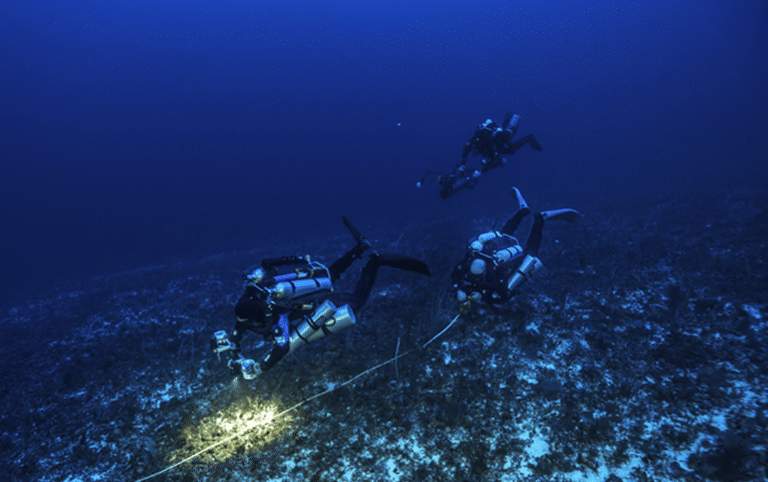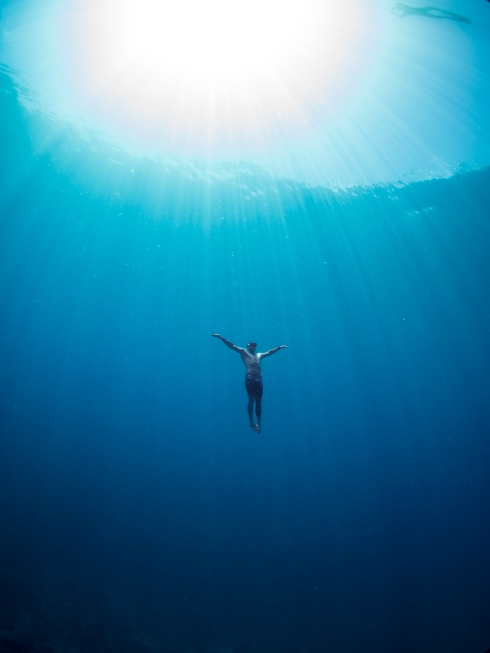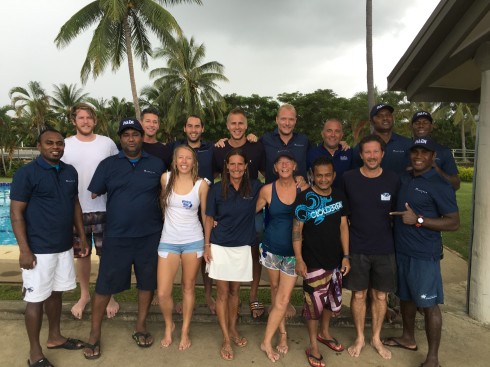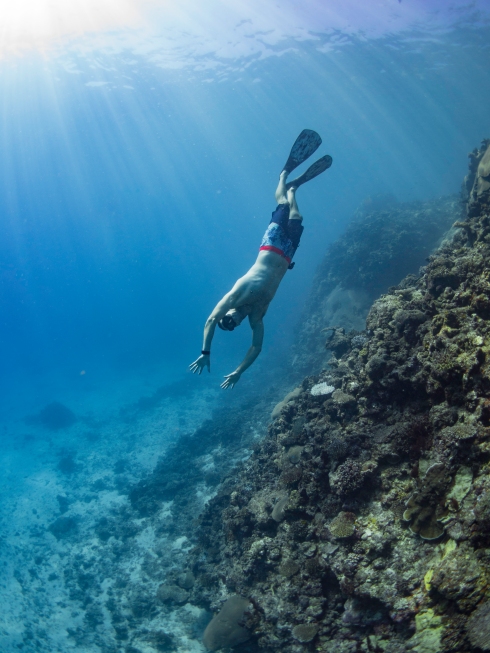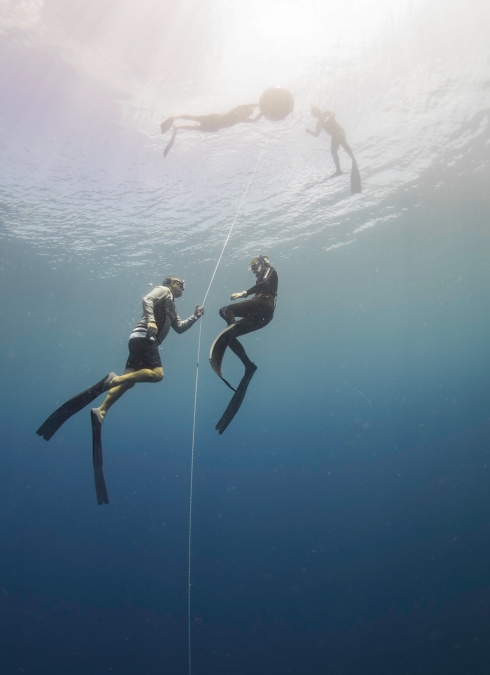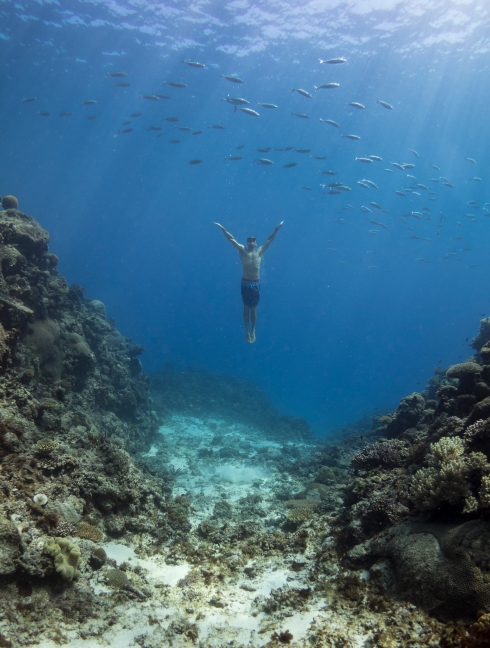A blog about the great scuba diving around Fiji. Some of the highlights of living and working in Fiji is the diving on the soft coral reefs with sharks, mantas and teeming life on the reefs.
Friday, 29 December 2017
Fiji: Diving’s Red Hot Chili Pepper
Fiji: Diving's Red Hot Chili Pepper from HD Expeditions Fiji on Vimeo.
Fiji: Diving’s Red Hot Chili Pepper
Friday, 15 December 2017
Leatherback sea turtle could be extinct within 20 years at last stronghold in the Pacific Ocean

- Ricardo F. Tapilatu, Peter H. Dutton, Manjula Tiwari, Thane Wibbels, Hadi V. Ferdinandus, William G. Iwanggin, Barakhiel H. Nugroho. Long-term decline of the western Pacific leatherback,Dermochelys coriacea: a globally important sea turtle population. Ecosphere, 2013; 4 (2): art25 DOI: 10.1890/ES12-00348.1
Thursday, 14 December 2017
Thursday, 7 December 2017
Friday, 1 December 2017
Leaving Paradise Behind - Tom Moody - Namenalala
 |
| Tom Moody |
Tom Moody is a man who knows his own mind.
“I like islands, I like tropics, I like remote,”he says. These were the simple elements he sought when he left his wife and teenaged daughter behind in Pittsburgh, Pennsylvania for Fiji in the fall of 1982. After weeks of scouting he caught wind of the island of Namenalala, and hitched a ride on a fishing boat to check it out. About half an hour from the town of Savusavu on the island of Vanua Levu, he spotted Namenalala. It looked like a green dragon with its long tail and high spine, keeping a lazy eastward gaze.
Moody spent two hours scouting Namenalala’s 107 acres. He found steep hills, rocky shores, and a complete absence of freshwater. In short, there were reasons why people had left this place alone. Moody got back on the boat but Moody peered over the edge at the coral reefs down below as the driver started toward town. “Can we just stop here for a few minutes?” he asked. He affixed his snorkeling mask over his narrow hazel eyes and flopped over the side. With a big breath he dove down into a pink, green, and blue forest. He was met by a trove of soft corals, feather stars, and sea slugs; there was more to look at than he could possibly take in. By the time he surfaced, he knew that he had found what he was looking for. Little did he know then this Eden would one day become one of Fiji’s last remaining pristine reefs.
Moody was not a middle-aged man in the throes of a midlife crisis. He was not trying to escape from a suburban life gone dull. In fact, he had lived the island life before, on Pidertupo Village, a three-acre island in the San Blas archipelago off Panama’s Caribbean coast. He and his wife Joan first came to Pidertupo in 1966 at the end of a five-year quest to find an island they could call their own. He had loved and then lost this life, and was in Fiji to try to rebuild it.
Read full article here: SAGE – Leaving Paradise Behind
Wednesday, 29 November 2017
Monday, 27 November 2017
Fiji Airways on sale LA to Fiji from $799pp
Los Angeles To Fiji Flights | Fiji Airways:
Saturday, 25 November 2017
Fiji Siren Update : 21st November 2017 – A Letter From The Owners
Worldwide Dive and Sail was born in 2003 on a simple premise; build diving liveaboard boats that provide the service that we, as divers, crave. As the years have gone by we have grown beyond the wildest dreams we had in those early days, but the focus has always remained the same – the guest.
Over the years we have built a team across the globe that we are incredibly proud of and we have shared some amazing times. Sadly, as this week, we have also shared some incredibly difficult times. In response to one of our posts on Facebook about the loss of Fiji Siren, someone posted “anyone can ‘sail a boat in calm waters’. It’s when things get rough that true skills and professionalism shine through”. Our team; on Fiji Siren, on the ground in Fiji, and at head office in Phuket have been the very epitome of this phrase and we cannot thank them enough.
At times like these, especially in this era of social media and instant gratification, people have a craving for information and are led to speculate on current events and past history. Often, fact gets mixed up with fiction and rumour becomes reality. Having seen this happening, especially on social media, as owners we feel that we should address the issue head on.
There are those out there who are insinuating that because we are not openly stating the cause of the sinking that we are hiding something. This is not the case and when we know for sure what happened we will be open about it, as we have been in the past. Until then, however, we can only pass along information that we know to be 100% true. To do otherwise would be irresponsible. More will surely follow on this in the fullness of time.
Also, not for the first time, there are comments from people who are openly saying that the incident was intentional so that we could claim on insurance. It’s very difficult to describe not just how hurtful this is, but also how offensive. There were 16 guests and 13 crew aboard Fiji Siren on the night of 14th of November and we are incredulous that anyone would consider that we might put even one of those souls at risk, in the dark and while they were sleeping, just for an insurance claim. Even had the boat been empty and in port, people seem to forget that insurance claims are not guaranteed to be paid. This is something that we can attest to personally.
Then there is our history. It’s no secret that Fiji Siren is not the first Siren that we have lost. We have never, and do not plan to, hide from the past. The expression ‘those who cannot remember the past are condemned to repeat it’ is so very true and should always be kept in mind. In the interests of keeping this message of a reasonable length we will not go into everything here, rather, anyone who is interested can read more here
We know it’s not an easy record to defend, but defend it we will. We know that all of our crews in these incidents have behaved excellently, that they followed procedure, that they put the customer’s safety first. There is no member of crew involved in any of our losses that we would not employ again, and of course that includes Fiji Siren. We are incredibly proud of them and will stand by them always! We know that our safety protocol is among the best in the business and anyone who has travelled with us will know this. We carry out muster drills on every cruise and make sure that people not only know where their life jacket is, but also make sure they know how to use it. We carry out fire drills, man overboard drills, hull breach drills on our vessels during cruises; with customers around to see it, and they state repeatedly that this is the first time they’ve seen this on a liveaboard vessel. Yes, we have had our problems, but we learn and we remember.
While we are down at heart right now, we will continue. We will do so because we are passionate about what we do. We believe in our product, we believe in our team, and we believe that together we can provide our guests with the most inspirational experiences.
Frank and Mark
Fiji Update - Siren Fleet:
Thursday, 23 November 2017
How a tiny shrimp fires a savage shock wave using just its claw

This shrimp is anything but feeble
By Aylin Woodward
This reef ain’t big enough for the both of us. Two pistol shrimp face each other, each spreading open its giant snapping claw – nearly half the size of its body. One or both of them then snaps the claw shut in its opponent’s direction, firing off a powerful water jet at speeds up to 30 metres per second.
These shrimp shootouts are rarely fatal, but can leave the loser retreating with missing claws or puncture wounds. But the high-speed squirt isn’t what harms their target – it’s the resulting shock wave. Now we have glimpsed how this unfolds in fine detail.
https://www.newscientist.com/article/2151700-how-a-tiny-shrimp-fires-a-savage-shock-wave-using-just-its-claw/
Monday, 20 November 2017
New NAI'A Family?
Best fishes,
Todd and Alexx Edwards, co-founders
NAI’A Fiji
rob@naia.com.fj
Thursday, 21 September 2017
4FJ is a different kind of campaign
It’s as easy as 1, 2, 3.
Step 1: Admit We’ve Have a Problem
Grouper, commonly known locally by names such as kawakawa and donu, are an important source of protein for our communities. Groupers, sought after by urban residents and tourists alike, are also commercially valuable to Fiji’s economy. The fish is just hmm, mmm good. But as our population grows and the demand for both food and income grows, these fish are disappearing all across Fiji.This is a fish that is a staple of village diets, that has been part of Fiji’s island culture for hundreds of years, and one of a ways rural community can make money for basics needs, is going away. That means the kids in the village will be less healthy with less protein to eat. That means our people will have less fish to sell and support their families. That also means our cultural traditions will be harder to maintain. Can you imagine how your next visit to the village will be if they can’t serve fish?
Bottom line: Unless action is not take to better manage these fish, which help support our villages, our culture and our economy, these fish face a bleak future. True story.
Step 2: Make the Pledge
These fish reproduce predictably every year at the same time. So if we don’t eat the fish when during the time, and let them release literally millions and millions of eggs instead, the fish populations will begin to rebound. So 4FJ is asking people from all walks of life, from our villages to our fish markets to our board rooms to our government offices to take a simple pledge: “I will not to eat, buy or sell grouper from July through September.” These are the months that grouper reproduce.
Step 3: Join the Movement
The goal of the pledge is to let these fish reproduce and fill our fish baskets for years to come. But this campaign wants to do more than just collect names and talk about fish biology. While people are stepping forward to do the right thing, it is important to remind ourselves why this campaign is so important. To remember that 4FJ is not about fish, it is about us. The campaign team will shine a spotlight on the people who are taking the pledge. We want to know why saving Fiji’s grouper is important to you. We want to know what it means to you, your family, your village, your island, your country. We realize that there are so many environmental messages coming at you right now. Save this, stop that. What we often forget in our busy lives is why these issues are so important.
So a key part of the 4FJ campaign work will be empowering ocean champions, who are making the pledge, to tell their story, from community members to business leaders to cultural and political leaders to fishermen to chefs to urban professionals, to mothers and fathers, sisters and brothers.
So visit www.4fj.com.fj to hear the stories of why this fish is important to our way of life, share your own and join the movement.
Campaign Team
SeaWeb Asia Pacific, a regional nonprofit organization that specializes in innovative communication initiatives, designed and is coordinating the 4FJ campaign. SeaWeb AP is located at 49 Gladstone Rd in Suva, if you want to come by and meet the team.
But the campaign is built on a dynamic partnership between the private sector, research institutions, government departments, non-governmental organizations and communities. Key partners include the Society for the Conservation of Reef Fish Aggregations, the Fiji Locally Managed Marine Area Network, the Fiji Department of Fisheries, the Wildlife Conservation Society Fiji, Conservation International, the WWF South Pacific Program, Mamanuca Environment Society, the University of the South Pacific Institute of Applied Science and the University of Hong Kong.
And as the campaign grows, we hope the campaign partners will grow as well.
4fj.org.fj
Thursday, 14 September 2017
blue o two release a brand new Fiji itinerary!
For further details on Project Shark: Fiji, please contact our expert travel team on +44 (0) 1752 480 808 or visit our website at www.blueotwo.com.
Friday, 9 June 2017
Saturday, 3 June 2017
Fiji Shark Dive - The Wandering Diver
Wednesday, 31 May 2017
Monday, 22 May 2017
Saturday, 20 May 2017
What Is Project Baseline?
Project Baseline empowers passionate citizens to observe and record change within the world's aquatic environments in a way that fosters public awareness and supports political action.
Project Baseline is a grassroots, environmental conservation initiative. Our organization exists to support people who are invested in water quality and availability by providing a platform that gives voice to otherwise under- or undocumented aquatic areas. We started as an organization built around underwater cave and open water divers.
Project Baseline encourages people to use pictures and dive logs already being collected for personal records, and upload that data into our database. Observations that are cataloged in an accessible, defensible and consistent manner can be used over time to gain a deeper understanding of each place visited by everyday adventurers. We are thrilled to be part of the Citizen Scientist movement that, when managed effectively, can be extremely influential in any number of scientific or public policy applications.
Project Baseline: www.projectbaseline.org
Global Underwater Explorers: www.globalunderwaterexplorers.org
Nonprofit Diving Group Supporting Underwater Conservation In Fiji
'via Blog this'
Wednesday, 10 May 2017
PADI Freediver kickstarted in Fiji

PADI Freediver kickstarted in Fiji | PADI Pros Oceania
'via Blog this'
































